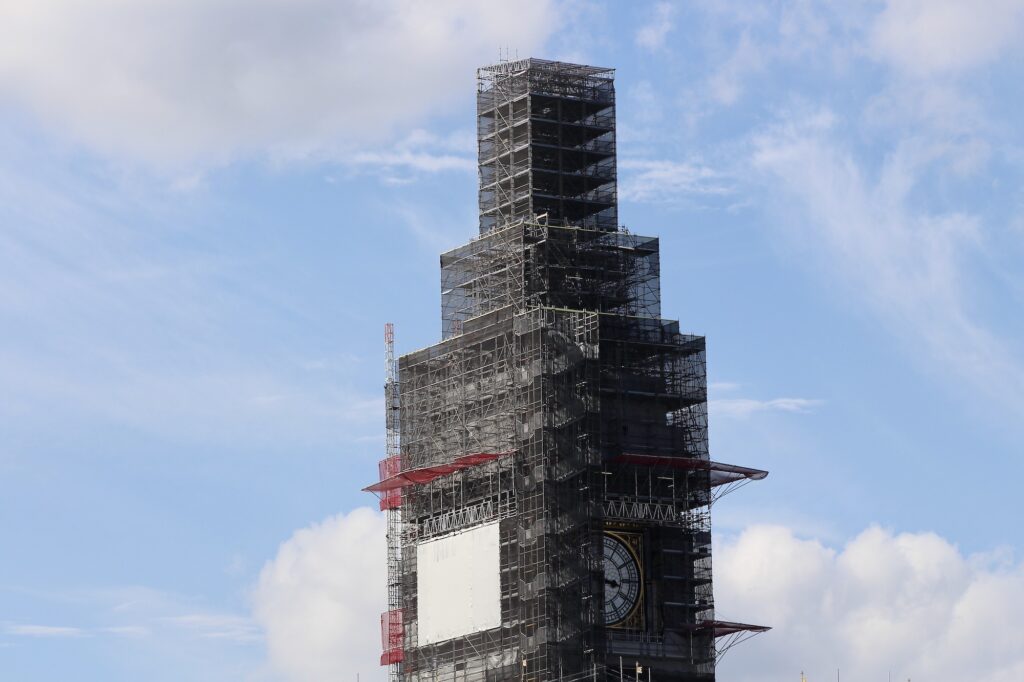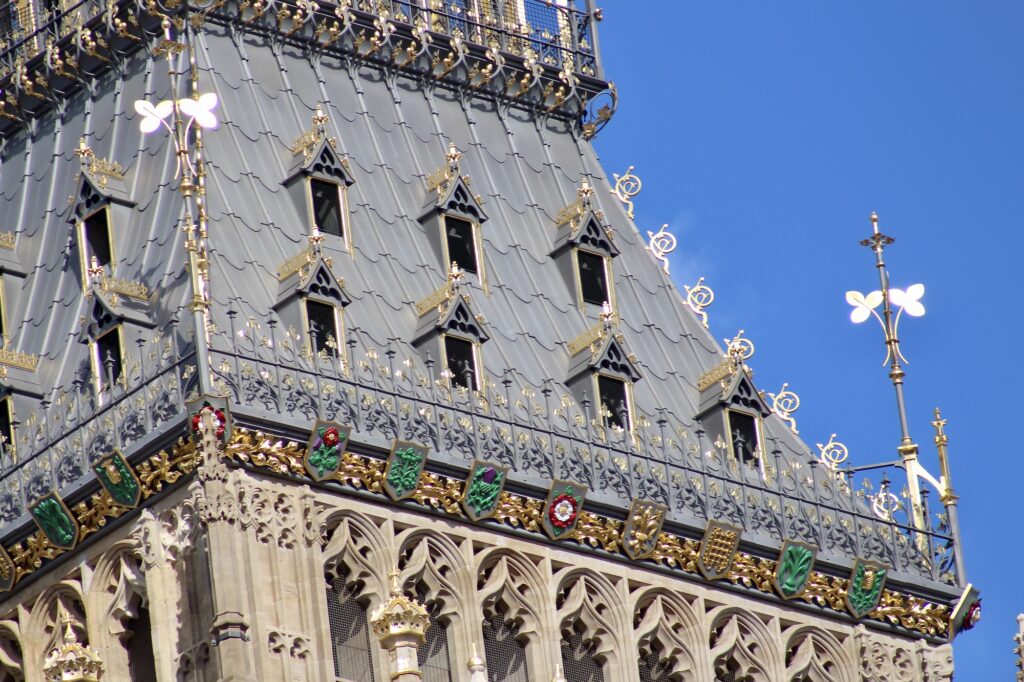
Re-named Elizabeth Tower in honour of the Queen’s Diamond Jubilee in 2012 but known world-wide as Big Ben after its famous bell, Augustus Pugin’s magnificent Neo-Gothic clock tower has undergone a major restoration.
The chimes of Big Ben, so much a part of the daily soundtrack of Westminster and beyond, fell silent on August 21st, 2017 for the protection of all those working on the tower. However, specialist mechanics ensured that the sonorous chimes rang out on the Remembrance Sundays and New Year’s Eves while the tower was encased in scaffolding.
The erection of the scaffolding by McAlpine was an extremely complex undertaking requiring more than usual specialist care. The Parliament website explains how it had to be “free-standing in order to avoid any further damage to the Tower, and the beams and boards were lifted into place one by one and built around the Tower without touching the stonework.”
As regular commuters, river users, locals, and broadcasters were able to see, this much-loved landmark slowly disappeared from view, shrouded in a web of intricate poles, planks and netting. And now the work is almost complete, you can once again see Big Ben in all its splendour from around Westminster and the Thames. Illustrated below is my record of some of the stages in the return to its pride of place in London.




The 3,433 cast iron roof tiles were removed and taken to a specialist workshop, where they were cleaned, repaired, or replaced if necessary. The new pieces were cast by the Hargreaves Foundry in Halifax and expertly matched to the original tiles. The Company’s ‘HF’ mark can be seen stamped on mouldings, gutters and cast iron work all across the restoration.



Sir Robert McAlpine said that at least one of the clock faces would be exposed through the scaffolding during the work. The face above was looking out over the Thames to see in the 2o19 New Year.

Little by little, and with the utmost care, removal of the scaffolding began leaving only the roof visible at this stage. Once again the tower’s metal cross and orb, with their intricate gilding work, could gleam in the sunshine.



Restored to the orignal blue colour, the hands and numerals set on their white glass background give the dials of the four clock faces a softer look. All 1,296 pieces of glass were replaced with hand made opal glass by German manufacturer Glashütte Lamberts, to match and replace the glass installed in the 1950s. On arrival the 342 plates were hand cut by a British Company to fit exactly into the required shapes.
The mechanism of the clock has been painstakingly restored. It was dismantled, winched fifty-three metres to the ground and transported to the Cumbria Clock Company in Dacre for a complete overhaul. “The hundreds of wheels, bell-hammers pinions, bearings and bushes were examined, repaired, photographed, logged and painted”. As the original designers and installers did not keep detailed records of the construction of the clock, the company “has produced the first user manual and set of engineering diagrams of the mechanism for the benefit of future clock keepers.”




There is no doubt that there has been a feeling of pride and achievement among all those involved with the restoration of Elizabeth Tower. The sense of continuity and fellowship among skilled craftspeople was also embodied in a time capsule discovered during the restoration. Dating from work carried out in the 1950s to repair WW2 bomb damage, it contained the names of everyone on the project, a newspaper, a coin and a letter referring back to an earlier time capsule left during a 1920s renovation. Adam Watrobski, principal architect of the restoration, said that “discovering the time capsule was a great moment, giving us a real sense of history, providing a tangible connection to those before us, who have worked to preserve this beautiful landmark.” And his team have left a message to those who will follow them in the future with “a list of everyone working on the restoration, messages from schoolchildren, and a copy of an order paper setting out parliamentary business for that day.”
Sources and Further Information
Film on Progress of Restoration, January 2020.
For more detail, see the Parliament website.
The Cumbria Clock Company who repaired the Great Clock.
The story of The Secret Restoration of the Big Ben clock in The House by Kate Proctor.
Article on delay of the restoration of Elizabeth Tower caused by Covid.